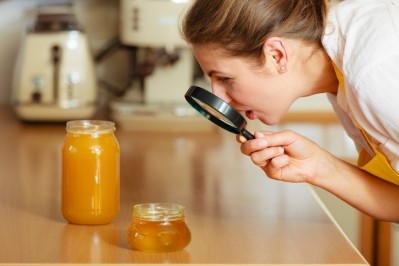BVL and JRC focus on early recognition of food crises

Dr Helmut Tschiersky said there was not one standard consumer but different types that have different information needs and the method of delivery needs to be adapted to the different groups.
He added future challenges include finding a way to combine knowledge in one central network to have prevention in co-ordinated way.
The symposium was hosted by the Federal Office of Consumer Protection and Food Safety (Bundesamt für Verbraucherschutz und Lebensmittelsicherheit, BVL) and the European Commission’s Joint Research Centre (JRC) in Berlin.
Philippe Loopuyt, DG SANTE, European Commission said food authenticity is to become a European Union Reference Laboratory (EURL) in the update of official control regulation finalised next year.
EURLs coordinate national reference laboratories (NRLs) in getting results through reference methods and materials, proficiency testing schemes and training to laboratory staff.
Authorities and company monitoring systems
The first part saw Dr Holger Brackemann of Stiftung Warentest and Matthias Wolfschmidt from foodwatch give talks focussing on the interests of consumers.
The second session had Dr Jens Linge, JRC, European Commission presenting the algorithms behind MedISys, Dr Hans Marvin of RIKILT on an early warning system to detect, predict and assess food fraud and Dr Petra Luber, BVL telling attendees about BeoWarn - BVL's warning system for crisis prevention.
Dr Linge said it is monitoring Twitter and Facebook in addition to traditional media such as BBC feeds as well as patents and scientific literature.
He added MedISys will be enhanced further to include adverse effects, consumer products, food and feed.
Dr Tobin Robinson explained how members can raise an issue in the European Food Safety Authority’s Emerging Risks Exchange Network (EREN).
They create what is known as a briefing note which goes around the network and gathers information and opinion and at some point it has enough for a decision to be made to make a risk assessment or prioritise data research.
Dr Robinson said climate change is not theoretical and can pose a risk to food safety.
He said invasive species can bring new diseases such as ciguatera from fish contaminated with toxin produced by algae and other species starting to appear in European waters.
Dr Richard Stadler, of Nestlé, said one up and one down traceability in the supply chain is not enough.
Its early warning network consists of supplier quality assurance such as vendor audits, performance monitoring, factory quality control including NIR fingerprinting, sensory and proximate analysis and it has looked at systems such as MALDI-TOF, multiplexing and rapid test kits.
Dr Stadler said he would welcome more working together as safety standards change and new scientific knowledge emerges on known contaminants instead of using ALARA (as low as reasonably achievable).
He added all parties have a common interest – to safeguard the food supply – whether it is through upstream testing with faster, cheaper screening tools or a focus on internationally recognised methods and method alignment to help avoid compliance issues and trade disputes.
A look at food crime
Andy Morling from theNational Food Crime Unit said food crime is when food fraud becomes serious in terms of detriment to consumers and financial gain or scope.
He said intelligence in the UK suggested true organised crime was a ‘very, very small part’ in food crime but it cannot afford to be complacent as a regulatory non-complier can become a fraudster.
“If legitimate players see food criminals gaining market share, they are at a competitive disadvantage, so why should they comply?” he told attendees.
Morling said there are a range of vulnerabilities citing cattle movements being mis-described to gain a higher quality status on welfare standards, so supermarkets pay a higher price and consumers also pay more than the meat justifies.
Cheese was one of the most vulnerable subjects the unit had seen so far, with one example being a dairy product with an additive it should not have, making it look different and gain market share.
Morling said another issue was product destined for destruction finding its way back into chain with the company entrusted with its disposal putting it back onto the market via relabelling or re-dating expired meat products.
The issue is more prominent in the meat industry than elsewhere but Morling said this could be as it is being looked for more and there are better infrastructures to detect it, so a degree of confirmation bias comes into play.
He added there was a need for more severe penalties as a deterrent but it looks to prosecute for fraud rather than breaches of food law as the law is there for a stronger punishment.






















